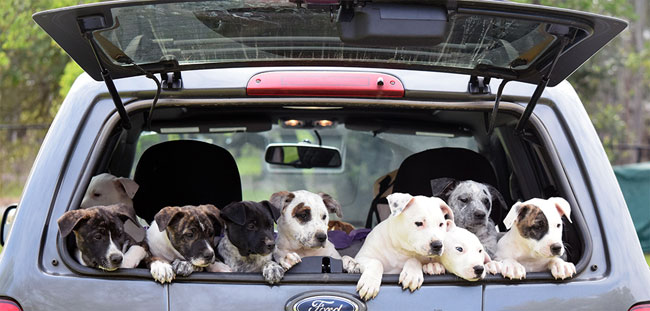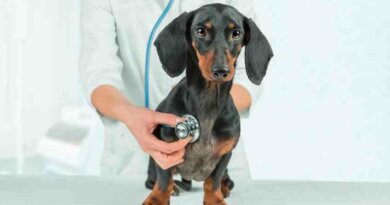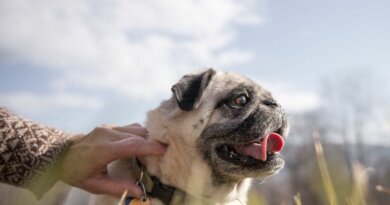Saving Animals While Keeping People Safe From COVID-19
Wow, the world has changed so much in such a short time. This occurs to me several times a day, but today’s biggest shock was a blog post written by Julie Levy, DVM, PhD, DACVIM, DABVP, Fran Marino Endowed Professor of Shelter Medicine Education, Maddie’s Shelter Medicine Program, University of Florida – in other words, a highly educated, passionate proponent of spay/neuter practices, especially in shelter medicine. Dr. Levy’s shocking post? A plea for shelter and rescue programs to suspend spay/neuter surgeries temporarily in order to support “safer at home” practices, slowing the spread of COVID-19.
It takes a village
While all operations of an animal
shelter require workers to show up to care for the animals, surgery, in
particular, brings people together in very close quarters. Of course, sterile
conditions are maintained during surgery. But I’ve been behind the scenes at
both veterinary clinics and shelters when they were doing back-to-back
spay/neuter surgeries. There is a small army of people working in support of the veterinarian who performs the surgeries:
people bathing animals, taking their temperatures, inducing sedation, shaving
them, helping intubate and secure them on the surgery table, monitoring the
anesthesia equipment, moving “packs” of sterilized surgical tools through the
process (delivering clean packs to the vet, taking away used instruments,
readying the used instruments for sterilization), providing the sort of routine
husbandry tasks that are immensely easier when the patient is still sedated
(ear cleaning, nail-trimming, expressing anal glands), monitoring the animals
after surgery and helping them “wake up” safely. Social distancing is
impossible in this setting – and performing all of these tasks under layers of
protective equipment is a lot more challenging in the (perennially) tighter
confines of a veterinary surgical suite.
For those of us who volunteer or work
closely with shelters or rescues, spay/neuter is a third-rail sort of
proposition. There are no stronger proponents of limiting the reproduction of
dogs and cats than us – and yes, as a long-time shelter volunteer, I count
myself as one of those people. As long as dogs and cats in this country are
being euthanized in the hundreds of thousands a year, I will be an avid
advocate for limiting the ability of most pets to procreate.
(What about the adverse effects on the
health of the altered animals? So glad you asked: In the May issue, we have a
major feature looking at the scientific literature regarding the effects of
spay/neuter on dogs. Stand by!)
Dr. Levy’s plea to temporarily halt spay/neuter surgery
Dr. Levy is not alone in recommending that shelters and
rescues temporarily move forward with adoptions and placing animals in foster
homes without first performing
spay/neuter surgery; the recommendation is being shared by all the major
university shelter-medicine programs in North America: The University of
Wisconsin-Madison Shelter Medicine Program, University of Florida Maddie’s
Shelter Medicine Program, University of California- Davis Koret Shelter
Medicine Program, Cornell Maddie’s Shelter Medicine Program, Humane Canada, The
Association for Advancement of Animal Welfare, Association of Shelter
Veterinarians, Ontario Shelter Medicine Association and the Association
Vétérinaire Québécoise de Médicine de Refuge.
Here’s an excerpt from Dr. Levy’s blog
post:
The urgency of this unprecedented pandemic calls for radical action to protect human lives, and as a consequence of that, to protect animal lives. Of utmost importance is to support our healthcare system, which is close to the breaking point, via #SaferAtHome. It is no longer just about our animal welfare missions, but about those brave souls who are literally putting their lives and personal welfare on the line for us. The sacrifices we make in this moment will determine what larger sacrifices will be thrust upon us in the coming weeks and months. It is time to suspend routine spay-neuter.
This will help keep as many people as possible healthy and out of our community hospitals so that life-saving beds are available when needed. This will safeguard our staff so that when this crisis subsides, and it will, we have an intact work force of experts that can go back to work with renewed vigor and tackle the animal needs that we are all highly committed to…
Spay/neuter is a tool of lifesaving, but we are too creative and resourceful to believe we cannot overcome in other ways, kitten season notwithstanding. Pausing spay/neuter is a gut punch, and it will have consequences – kittens will be born, revenue will fall, staff may be furloughed – but these pale in comparison to the alternative.
A “gut punch” – that’s the perfect expression to describe
how I felt reading Dr. Levy’s post. Especially since I am currently helping a
friend with fostering a litter of 10 puppies for our local shelter – puppies
who are at the perfect age for getting placed in homes. The idea of sending
those pups away with people who may not manage to get them back to the shelter
(at some point in the future, god willing) in time to prevent them from
reproducing is anathema to me. And yet, do I want the veterinarian, registered
veterinary technicians, and other shelter staff members to risk their health
and that of their families in order to prevent this from happening? I do not.
What shelters are doing during this crisis
I’ve been watching the websites and Facebook pages of
shelters that I admire to see how they are dealing with the intake and adoption
of animals. Most shelters have closed their doors to the public at this time,
asking people to call the shelter to discuss surrenders, adoptions, or other
needs. The most organized shelters (and those who are best-supported by
volunteers in their communities) have sent most or all of their adoptable
animals out to foster homes. Most are in the process of setting up online “meet
and greet” sessions in support of potential adoptions, reserving the transfer
of animals for only the most pre-qualified, committed adopters. I’m trying to
help my shelter accomplish this, if only for these pups! (I have to admit to
feeling special urgency about puppies; I hate the idea of them spending the
most formative weeks of their lives seeing only my friend and me and our dogs;
for the best socialization experience they can have in these trying times, I’d
so prefer to get them into the hands of their adoptive families as soon as
possible.)
Tell me: What are shelters in your area doing with their
wards today? Are you helping in any way? If you don’t know what’s happening at
your local shelter and have a little time to spare to help, give them a call!





cialis none prescription: curved penis and cialis cialis on li
dark web websites darknet site tor dark web
tor market url how to access dark web deep web links
dark web market onion market darknet drug store